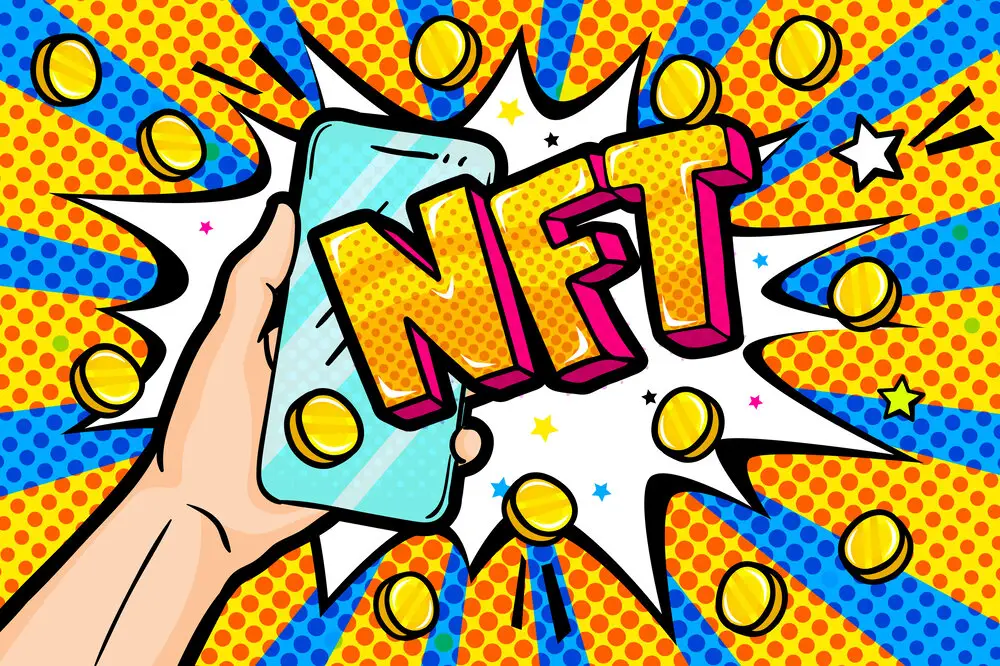Non-fungible tokens (NFTs) have been making headlines in the world of blockchain and cryptocurrency. They are unique digital assets that are used to represent ownership or proof of authenticity of digital files such as art, music, videos, and other digital assets. NFTs have gained significant popularity in recent years, with some selling for millions of dollars at auctions. However, there is a new type of NFT that is emerging called dynamic NFTs, which have unique features and capabilities that make them different from traditional NFTs.
So, what are dynamic NFTs? Dynamic NFTs are a type of non-fungible token that can change their appearance, attributes, and other properties based on certain conditions or triggers. They are different from traditional NFTs, which are static and unchanging digital assets. Dynamic NFTs can be programmed to react to different variables, such as the time of day, the number of likes or views they receive, or changes in external data sources such as weather conditions or stock prices.
The creation of dynamic NFTs is made possible through the use of smart contracts, which are self-executing computer programs that are stored on the blockchain. Smart contracts can be programmed to trigger specific actions or events based on certain conditions, which makes them ideal for creating dynamic NFTs.
One of the most significant advantages of dynamic NFTs is that they provide a new level of interactivity and engagement for users. They can be used to create unique experiences for collectors and fans, such as digital artworks that change in appearance based on the time of day or the location of the viewer. Dynamic NFTs can also be used to gamify experiences, where users can earn rewards or unlock new features based on certain conditions or achievements.
There are several use cases for dynamic NFTs, such as gaming, entertainment, and social media. In the gaming industry, dynamic NFTs can be used to create in-game items that change in appearance or attributes based on the player’s performance or other factors. In the entertainment industry, dynamic NFTs can be used to create digital collectibles that change in appearance or value based on the popularity or success of a particular movie or TV show. In social media, dynamic NFTs can be used to create unique experiences for users, such as digital badges or tokens that are earned based on engagement or other activities.
One example of a dynamic NFT is CryptoKitties, a blockchain-based game that allows players to collect, breed, and trade digital cats. Each CryptoKitty is a unique NFT that has its own set of attributes, such as eye color and fur pattern. These attributes can be combined through breeding to create new and unique CryptoKitties. The game has gained significant popularity, with some CryptoKitties selling for hundreds of thousands of dollars.
Another example of a dynamic NFT is the digital artwork “The Fungible Collection” by artist Trevor Jones. The artwork consists of 10,000 unique NFTs, each with its own set of attributes and traits. The appearance of the artwork changes based on the viewer’s location and the time of day, creating a unique and interactive experience for collectors.
While dynamic NFTs offer exciting new possibilities for creators and collectors, there are also some potential challenges and risks to consider. One challenge is the complexity of creating and managing dynamic NFTs, which requires significant technical expertise and resources. Another challenge is the potential for fraud or manipulation, as dynamic NFTs can be programmed to react to external data sources that may be susceptible to manipulation or false reporting.
In conclusion, dynamic NFTs are a new type of non-fungible token that offers unique capabilities and interactivity for users. They are made possible through the use of smart contracts and can change their appearance, attributes, and other properties based on certain conditions or triggers. Dynamic NFTs have the potential to revolutionize various industries such as gaming, entertainment, and social media by creating unique experiences and rewards for users.
While there are potential challenges and risks associated with dynamic NFTs, such as technical complexity and the potential for fraud or manipulation, their potential benefits make them an exciting development in the world of blockchain and cryptocurrency.
As the technology continues to evolve, we can expect to see more innovative use cases for dynamic NFTs and other blockchain-based assets. With the potential for increased interactivity and engagement, dynamic NFTs have the potential to redefine how we think about digital ownership and the value of digital assets.







